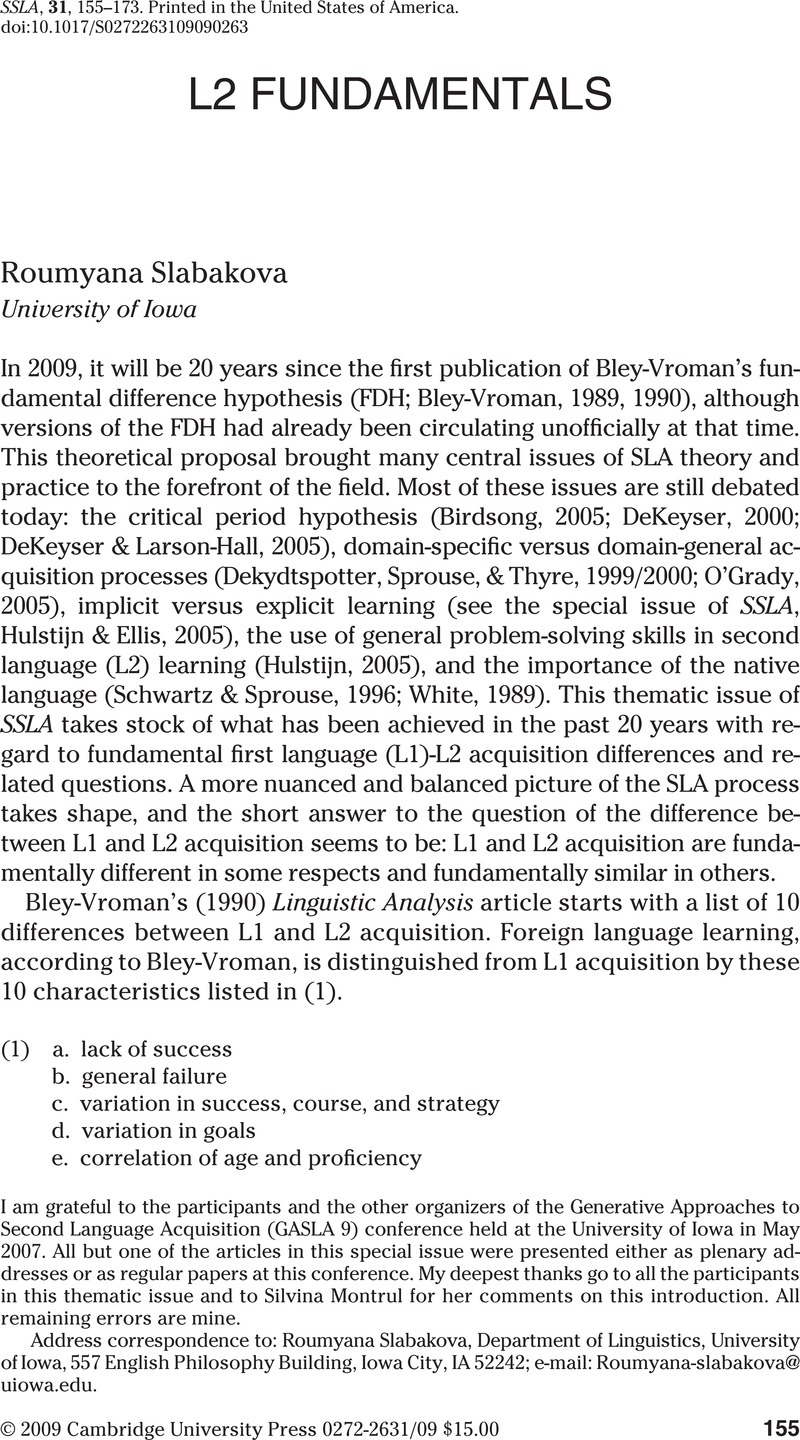Crossref Citations
This article has been cited by the following publications. This list is generated based on data provided by Crossref.
Rothman, Jason
2011.
L3 syntactic transfer selectivity and typological determinacy: The typological primacy model.
Second Language Research,
Vol. 27,
Issue. 1,
p.
107.
Rothman, Jason
Iverson, Michael
and
Judy, Tiffany
2011.
Introduction: Some notes on the generative study of L3 acquisition.
Second Language Research,
Vol. 27,
Issue. 1,
p.
5.
Roberts, Leah
2012.
Psycholinguistic techniques and resources in second language acquisition research.
Second Language Research,
Vol. 28,
Issue. 1,
p.
113.
Rothman, Jason
and
Iverson, Michael
2013.
ISLANDS AND OBJECTS IN L2 SPANISH.
Studies in Second Language Acquisition,
Vol. 35,
Issue. 4,
p.
589.
Roberts, Leah
and
Siyanova-Chanturia, Anna
2013.
USING EYE-TRACKING TO INVESTIGATE TOPICS IN L2 ACQUISITION AND L2 PROCESSING.
Studies in Second Language Acquisition,
Vol. 35,
Issue. 2,
p.
213.
Liceras, Juana M.
2014.
Teaching Spanish as a non-primary language in the twenty-first century: insights from linguistic theory, psycholinguistic theory, and empirical research on language acquisition.
Journal of Spanish Language Teaching,
Vol. 1,
Issue. 1,
p.
86.
Liceras, Juana M.
and
Alba de la Fuente, Anahí
2015.
The Acquisition of Spanish in Understudied Language Pairings.
Vol. 3,
Issue. ,
p.
329.
PERPIÑÁN, SILVIA
2015.
L2 Grammar and L2 Processing in the Acquisition of Spanish Prepositional Relative Clauses.
Bilingualism: Language and Cognition,
Vol. 18,
Issue. 4,
p.
577.
Roberts, Leah
2016.
The Cambridge Handbook of Linguistic Multi-Competence.
p.
227.
Perpiñán, Sílvia
2020.
Wh-Movement, Islands, and Resumption in L1 and L2 Spanish: Is (Un)Grammaticality the Relevant Property?.
Frontiers in Psychology,
Vol. 11,
Issue. ,
Kong, Stano
2020.
Passives in Chinese speakers' L2 English.
Lingua,
Vol. 240,
Issue. ,
p.
102836.
Diaubalick, Tim
and
Guijarro-Fuentes, Pedro
2023.
Consequences of the comparative fallacy for the acquisition of grammatical aspect in Spanish.
International Review of Applied Linguistics in Language Teaching,
Vol. 61,
Issue. 4,
p.
1301.
Perpiñán, Sílvia
and
Putnam, Michael T.
2024.
Filler-gap dependencies in bi- and multilingual grammars: Findings, challenges, and unknowns.
Second Language Research,
Vol. 40,
Issue. 1,
p.
3.





